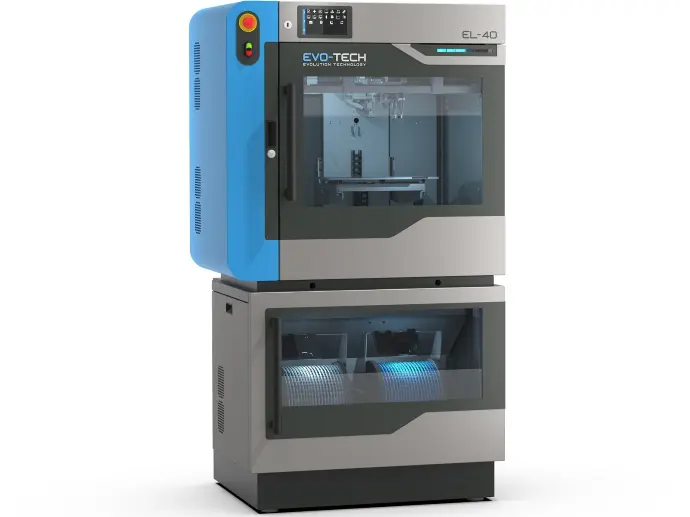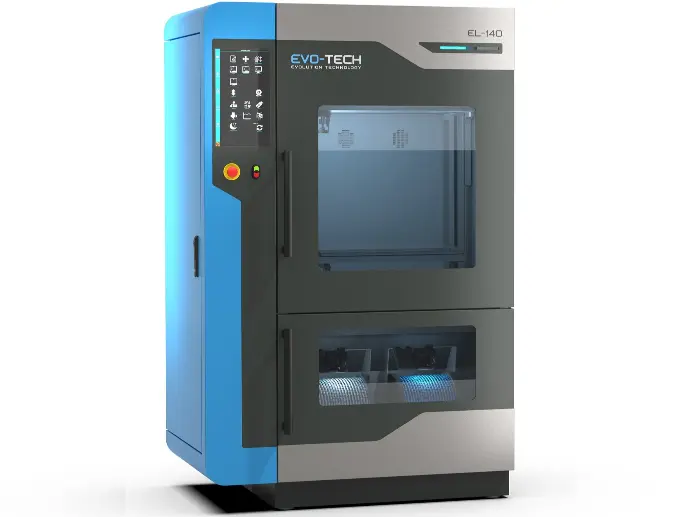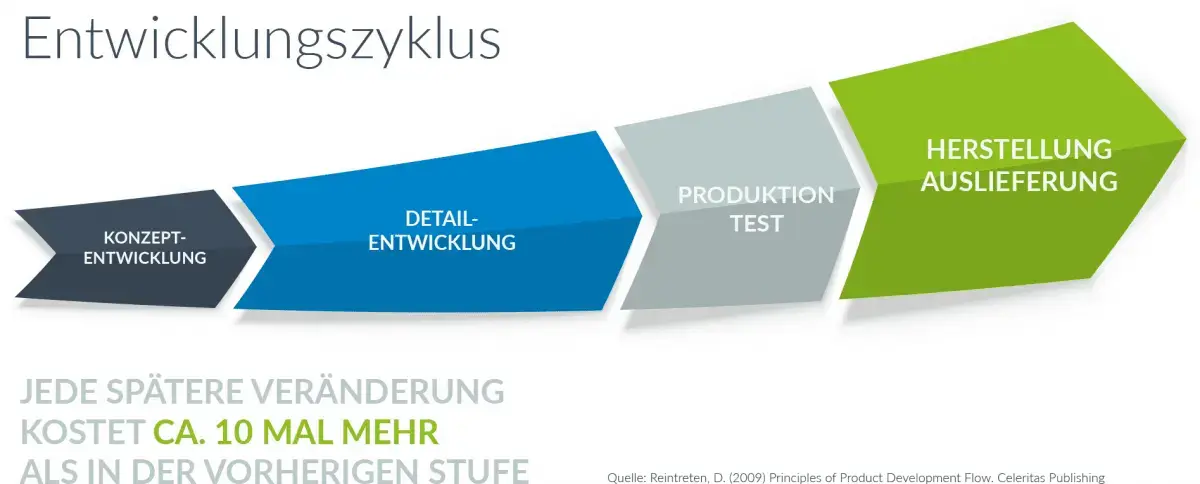THE BIG LOT FOR SMALL LOT SIZES
With the EVO-lizer a product is never finished, but always better. In addition, you benefit from further advantages of the EVO-lizer, with which you can produce small batch sizes almost under the conditions of large-scale production.
Advantages of the EVO-lizer 3D printer
- Just in time production of small series without minimum production and order quantities
- ow unit costs thanks to tool-free production and elimination of set-up costs and set-up times
- High flexibility and customization through simultaneous printing of several (different) parts
- Use of different filaments with different properties (e.g. abrasion-resistant and fire-retardant)
- Production of extremely complex components that would otherwise be difficult or impossible to manufacture. For example, components with undercuts, large fluctuations in wall thickness or complex geometry. In addition, weight-optimized components are possible using honeycomb structures.
Industries of the future for small series
Which industries will not do without small series with 3D printing in the future? Which industries can benefit the most here? The following should be mentioned in particular: mechanical and special machine construction, the automotive industry and start-ups from a wide range of sectors. The EL 3D printer series shows its strengths
The EL 3D printer series shows its strengths
The 3D printers from NEVO3D print completely independently, no permanent supervision by specialist staff is necessary, the printing result is completed overnight! The filaments provided by NEVO3D (mostly developed in-house) meet the special requirements of materials: fire-retardant for housing construction or abrasion-resistant filament for moving components, to name just the most important ones. Another strength – the low costs! While comparable, professional machines incur high running costs, the unit costs of the components produced with the EVO-lizer are very low - the filament is on average 4 times cheaper than its competitors. However, the high productivity also results from the low maintenance effort - a large number of users print 60 hours a week or more!
The 3D printers of the EL series offer new possibilities in series production

3D printer EL-40
Enables the creation of parts up to 270 x 200 x 210mm (W x D x H) with extremely low operating costs and an open system for filaments.

3D printer EL-140
Enables simultaneous printing of multiple parts and the processing of large quantities of material up to a size of 570 x 450 x 570 mm (W x D x H).
The advantages of an additive small series
What are the advantages of the EVO-lizer in the context of producing a small series of additives? On the one hand, tool-free production, which enables low unit costs for small batch sizes, as there is no investment in tools. This is not as important at the beginning of the development cycle as it is afterwards; the costs per change increase exponentially over the course of the cycle and can be enormous costs cause. This is directly related to the high level of flexibility and customizability: if parts are required that vary more or less slightly from the previous part, the benefit of the EVO-lizer is also striking here: it has the option of printing several parts at the same time in one process , of course there are no set-up costs and set-up times. Another advantage: different filaments can be used, for example in terms of abrasion resistance or fire retardancy. Another asset of the EVO-lizer is the production of complex parts that would otherwise be very difficult or impossible to produce. The following examples should be mentioned here: components with undercuts, large fluctuations in wall thickness, complex geometry, such as the air flow distribution from Kolm, weight-optimized components thanks to a honeycomb structure, gear covers from FH Villach or self-contained systems such as planetary gears.
User report PMT GmbH
PMT GmbH, based in North Rhine-Westphalia, is one of the first users of the new EL-102.
As a provider of innovative solutions for the production of molded parts and assemblies, we appreciate the possibilities and performance of the new system.

The development cycle and the associated costs
What does the development cycle in manufacturing look like today? From the concept development in the first step you move on to detailed development, then to production/testing and subsequently to manufacturing/delivery. Depending on the complexity of the product, this process can of course be broken down into finer intermediate steps. If the costs of desired changes are low at the beginning, these increase sharply as the process progresses - each change in a subsequent stage costs 10 times as much as the previous one! (Source: Reintritt, D. (2009) Principles of Product Development Flow. Celeritas Publishing)


